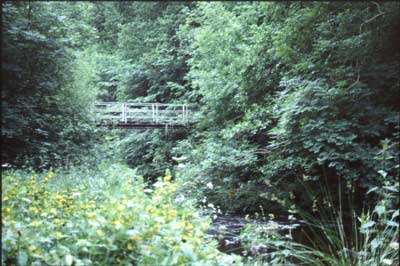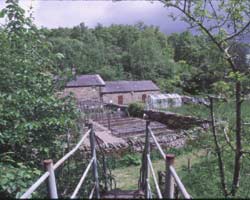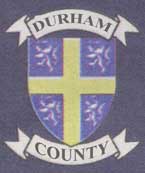
LEADMILL FOOTBRIDGE

"Everybody loves a bridge. They are essentially romantic objects - brave, adventurous, usually handsome or at least interesting to look at, often magnificently idiosyncratic and every single one of them a seperate individual with its own personality, pedigree and background, each time to be freshly encountered and enjoyed."
Bridges. Sir Hugh Casson. 1963
This is probably the most isolated bridge on the whole of the Derwent, reached along either of two minor roads off the A68 northwest of Allensford. From Crooked Oak Farm the road continues to a house by the river in a secluded spot overhung by trees. The footbridge is reached by climbing some steps and is built high above the river. After crossing there are more steps and a steep narrow path leads to another minor road on the south side of the Derwent which leads to the small village of Muggleswick. The bridge is a re-construction of an 18th century wooden bridge suspended by chains.
The present bridge was formerly used by leadminers at nearby mines for this is the edge of the Pennine lead-mining district encompassing parts of Northumberland, Durham and Cumbria. Silver mines also existed. There was a crushing mill here and miner's living accommodation. The river between Allensford and Muggleswick is at its most scenic with many bends as it winds its way through gullys and ravines being joined by several small streams along the way. At Narrow Comb Wood is the path leading down to the bridge and the area is designated a site of special scientific interest.
- Constructed - 1950s.
- Type - beam, concrete, on iron rails.
- Position: half a mile south of Crooked Oak Farm, Northumberland.
- Grid Ref: NZ 053 488

